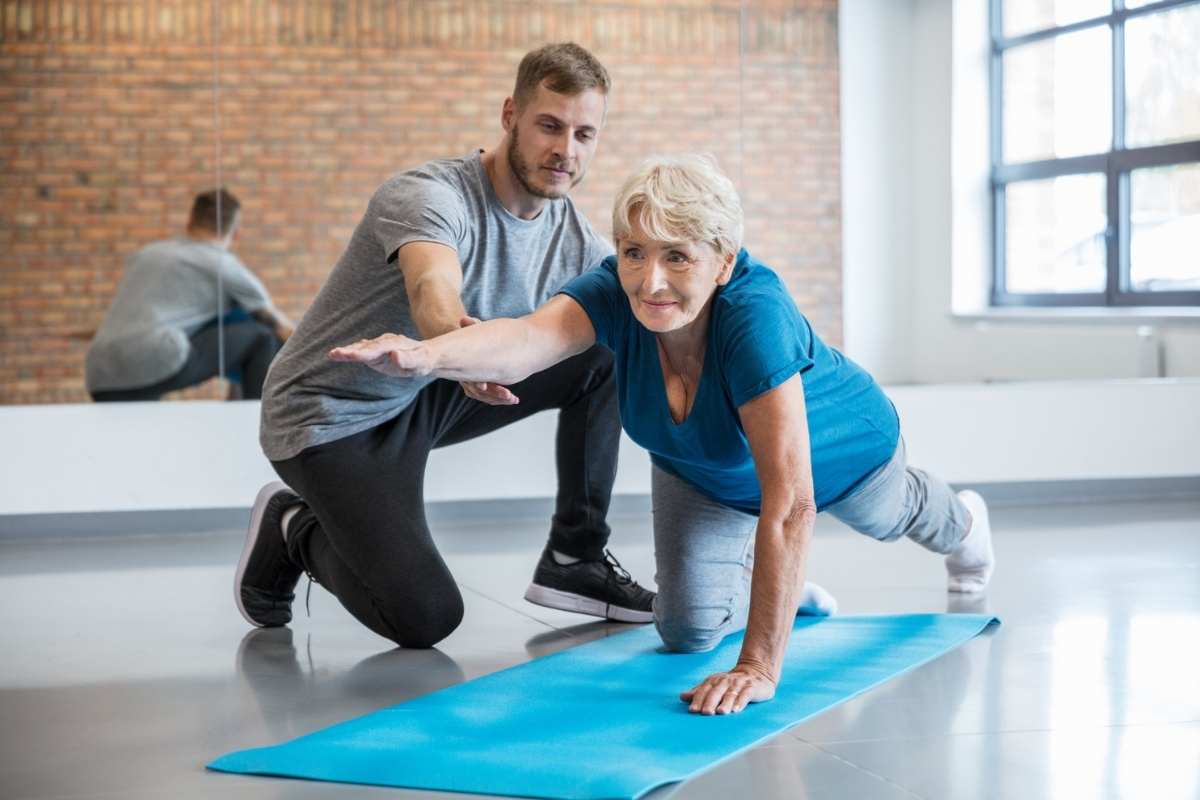
A physiotherapist explains how healthy lifestyle changes, self-management strategies and the right support can help get you moving and feeling better.
Osteoarthritis is the most common form of arthritis in Australia. In fact, it affects 1 in 5 Australians over the age of 45, and more than 1 in 3 over the age of 75.1
It can cause symptoms like joint pain and stiffness and difficulty with some kinds of movement – which can make some everyday activities uncomfortable or challenging.2
The good news is, there is support available and things you can do to help manage your symptoms.
We talked to Chris Morton, a physiotherapist and clinical educator at Ethos Health, for some expert advice.
In this article
What is osteoarthritis?
“Osteoarthritis is a chronic condition caused by the breakdown of the cartilage that overlies the ends of bones in joints,” Morton explains.
“Cartilage acts a shock absorber for the underlying bone, so when someone has osteoarthritis, the bone is exposed to higher than usual load.
“This can cause joint inflammation, pain, and stiffness.”
Osteoarthritis most commonly affects the hips, knees, fingers or big toe.2 It can develop at any age, but it’s more common in people over the age of 40. It’s also more common in women than in men.2
Some other risk factors include family history, being overweight and previous injuries to the joint.2
Who can help with osteoarthritis?
Morton says it’s important to seek support from health professionals to help manage osteoarthritis.
“While there is currently no cure, self-management strategies and the support of health professionals can help people achieve substantial benefits in pain reduction and improved function,” he says.
“GPs are often a good first point of contact, but multidisciplinary care – getting support from a range of different health specialists – is a key principle for managing osteoarthritis.”
Here are some other health professionals who may be able to support you:3
- Dietitians can provide advice on healthy eating and weight loss to help manage osteoarthritis symptoms.
- Physiotherapists can advise on exercise and treatments for improving flexibility and relieving pain.
- Exercise physiologists can also advise you on the best types of exercise to help.
- Podiatrists can help with footwear changes that may help support you.
- Psychologists can teach you tools for coping with pain and help you manage difficult emotions that may result from your arthritis.
- Pharmacists can help you understand medications and how to use them safely.
- Occupational therapists can help if you’re finding some everyday activities challenging and advise on the use of aids or equipment.
- Rheumatologists, doctors specialising in arthritis, other musculoskeletal conditions and autoimmune disorders, can help with diagnosis and treatment.
- Rheumatology nurses can provide physical and emotional support as well as education for patients with all types of arthritis.
Achieving and maintaining a healthy weight
Maintaining a healthy weight is important for managing osteoarthritis, Morton explains. Extra body weight puts pressure on joints like your knees and hips.2
For people with osteoarthritis who are overweight, working towards a healthy weight is recommended to help manage symptoms and prevent further damage to the joints.2
“Eating a balanced diet of nutritious food can help you maintain a healthy body weight,” Morton says.
For more guidance on weight loss and healthy eating for osteoarthritis, a dietitian can help.
Exercise for osteoarthritis
“Exercise is important because it builds good muscle strength to support your joints,” Morton says.
It’s recommended to choose exercises that will help you with flexibility, strength and overall fitness.2
A few examples of exercises that might be suitable include:4
- Walking
- Swimming or water exercise classes
- Tai chi
- Strength training
- Chair exercises
- Low-impact aerobics
Before you start any new exercise, it’s a good idea to talk to a health professional to make sure it’s safe and suitable for you.
A physiotherapist or exercise physiologist can give you more specific and personalised guidance on exercises.
Other potential treatments
Morton says some other treatment options a health professional may recommend to help with pain relief include:
- Special devices and footwear. Things like walking aids, knee braces and footwear changes (such as insoles) may be helpful in some cases. A physiotherapist, podiatrist or occupational therapist can help advise you on this.
- Pain management medications. Your health practitioner may recommend trying paracetamol or NSAIDs (non-steroidal anti-inflammatory drugs) for a short period to see if they are effective for you.
What about joint replacement surgery?
In some cases, if your symptoms can’t be managed in other ways, your doctor may recommend joint replacement surgery and refer you to an orthopaedic surgeon.2
However, Morton says surgery is usually only recommended when other management strategies no longer provide adequate pain relief or functional improvement.
How can HBF help with osteoarthritis?
- HBF hospital cover can include joint replacement surgery.
- HBF extras cover can include physiotherapy, as well as other services that may help manage osteoarthritis symptoms such as exercise physiology, dietetics, podiatry, occupational therapy, psychology and more.
- Osteoarthritis Healthy Weight for Life is a guided support program available to eligible* HBF members, designed to help you manage knee and hip osteoarthritis symptoms through supporting weight loss, increased mobility and better pain management.
Remember, there is support available to help you manage osteoarthritis symptoms. Talk to your GP to find out what could be suitable for you.
Health support programs
HBF offers health support programs for osteoarthritis, type 2 diabetes, cardiovascular disease and cardiac rehabilitation.
Find out more
Disclaimer:
This article contains general information only and does not take into account the health, personal situation or needs of any person. In conjunction with your GP or treating health care professional, please consider whether the information is suitable for you and your personal circumstances.
*To understand if you are eligible for this program, visit the Osteoarthritis Healthy Weight For Life page for more details.